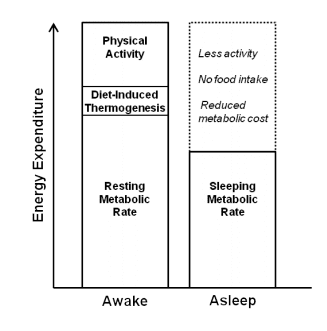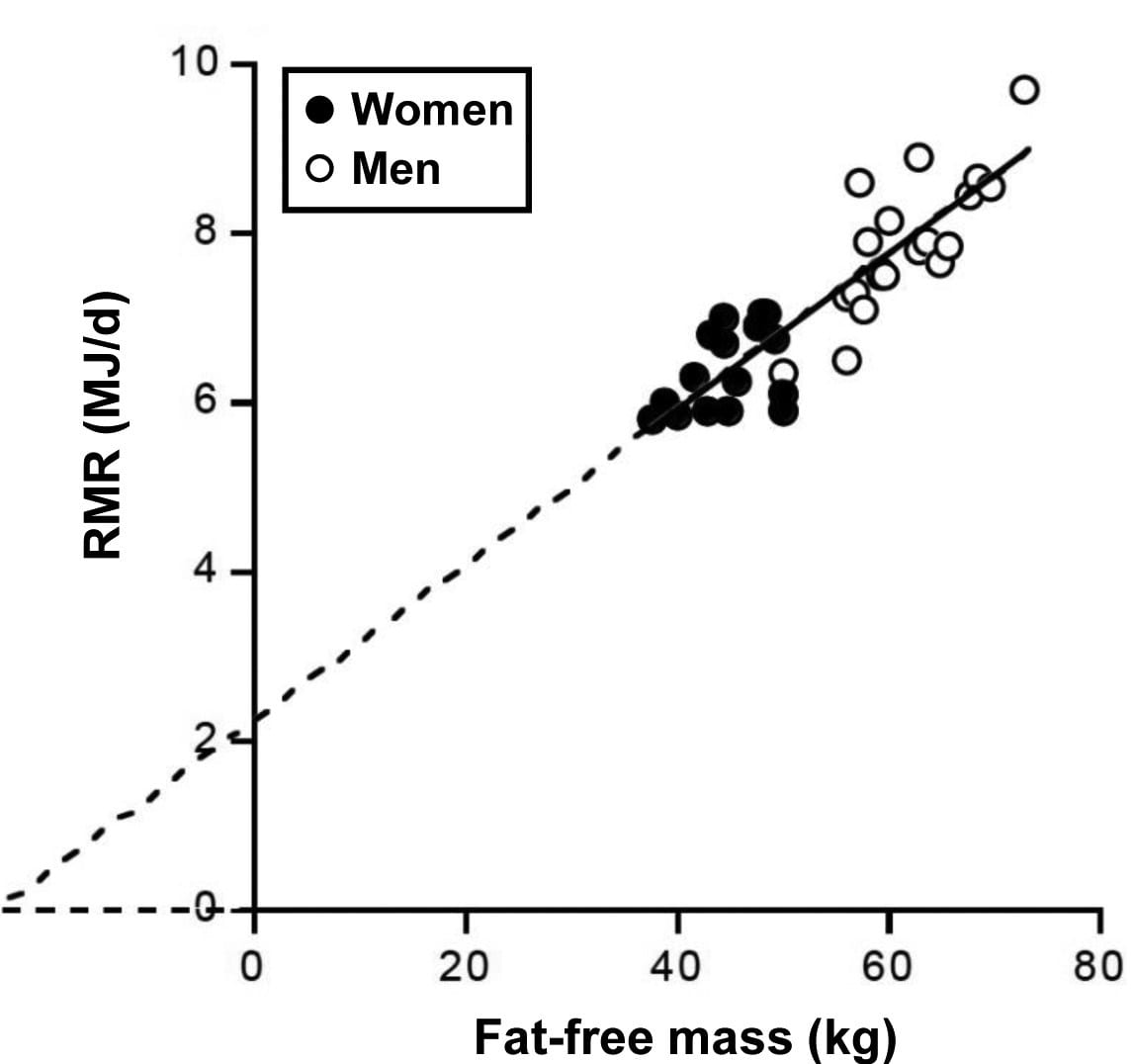Human Energy Expenditure (EE) is not stable over a 24-hour period. It varies depending on the time of day, physical activity, the composition of food intake and the quantity of food. The metabolism of one person is very different from that of another. Besides that, our nutrient utilization at the same energy expenditure levels can differ during the day.
The human 24-hour energy expenditure consists of several components. The components can be identified as different stages of the 24-hour energy expenditure. It is possible to measure the different components of 24-hour energy expenditure by allocating individual components to a timeframe. Despite its complexity, the components of human body 24-h EE can be identified and measured with Indirect Calorimetry (IC) equipment, such as the Room Calorimeter or the Omnical. In this series, we will describe all the EE components.
In this part, let us explore the BMR and RMR, i.e. the basal metabolic rate and resting metabolic rate.
Understanding Basal Metabolic Rate (BMR) and Resting Metabolic Rate (RMR)
The human body is driven by numerous chemical reactions that consume energy. BMR and RMR are the Energy Expenditure (EE) components required to maintain the essential human body functions, medically referred to as the state of whole-body homeostasis. BMR and RMR account for 60% to 75% of EE. They both are measured with the help of a metabolic cart and a ventilated hood canopy system. However, the measurements are obtained under different conditions, where the BMR measurement demands a more precise, highly controlled environment than RMR. Both BMR and RMR can be influenced by factors as age, gender, genetics, metabolic conditions, food habits, food intake quantity, body composition, ethnicity, exposure to cold, etc.
How do we measure BMR/RMR?
As stated earlier, the conditions for BMR measurement are more stringent. The subject under observation needs to be without calorie intake (food or beverage) for 10-12 hours. (S)he must remain awake and calm with normal breath rate, lying on a bed in a room with controllable temperature and humidity levels. The area should be dimly lit with no scope for an external stimulus through light or sound. The subject sleeps in the same room and measurement must be recorded early morning, after the person has woken up. As the conditions are tightly controlled, determining BMR with a whole room calorimeter is easy, as it can measure the parameters over a longer duration with negligible environmental variations.
On the other hand, RMR measurement is less demanding of the environment it is measured in. It is dependent on circadian (sleep-wake) phase rather than on physiological or environmental factors and can therefore be taken with a ventilated hood canopy. The trade-off is that the conditions are less controllable, and the subject can experience mild discomfort by wearing the hood.
Measurement sensitivities
How humans utilize their energy throughout the day is largely determined by Fat Free Mass (FFM) and BMR/RMR. Fat-free mass is a strong component of the BMR/RMR and 24-hour EE in humans, it needs to be taken into account in the analysis of the values measured during the study.
A low BMR/RMR points to the possibility of future weight gain. Obese people might seem to have higher RMR compared to those with normal weight but generalizing this can be misleading. A direct positive link between body weight and RMR satisfactorily explains this difference. When studying subjects with low resting EE, using adjusted values of FFM or lean mass and Fat Mass (FM) are important, which can explain 60-70% variance in BMR/RMR.
BMR readings are commonly corrected by using the ratio of resting EE to the total body weight or lean mass (FFM). Be careful to not to be misguided by the fact that their associations have a non-zero intercept (figure 2). You will run into issues while comparing groups which differ in body compositions or have undergone noticeable change in their body composition. Adopting a regression-based approach to normalize resting EE values is better for those cases.
We developed equipment with the highest accuracy and reproducability for your indirect calorimetry measurements.
“The Omnical is the best metabolic cart for assessing RMR and RER.” – Juan M. Alcántara Alcántara, 2020
We provide complete indirect calorimetry and accelerometry solutions and support for your research and measurements. Our world class instruments for accelerometry and indirect calorimetry are backed up by excellent service, which helps you perform your measurements and complete your research accurately. You can always contact us for information and advice on product support, software support, parameter use, measurement methods and protocols, validation options, interpretation and correct use of measurement data and complementary products.
Need to measure BMR/RMR?
If your work involves measuring BMR, RMR or any associated component, we welcome your enquiry about indirect calorimetry, accelerometry add-ons, metabolic carts, whole room calorimeter systems, and any technical requirements related to these. Reach out to us through the channels mentioned on our contact information page.
- Chen KY, Smith S, Ravussin E, Krakoff J, Plasqui G, Tanaka S, Murgatroyd P, Brychta R, Bock C, Carnero E, Schoffelen P, Hatamoto Y, Rynders C, Melanson EL. Room Indirect Calorimetry Operating and Reporting Standards (RICORS 1.0): A Guide to Conducting and Reporting Human Whole-Room Calorimeter Studies. Obesity (Silver Spring). 2020 Sep;28(9):1613-1625.
- Alcántara Alcántara, Juan Manuel. Assessment of resting energy expenditure and nutrient oxidation by indirect calorimetry: methodological implications. Granada: Universidad de Granada, 2021.
Photo
- Spaeth, Andrea Marie, “Consequences of Chronic Sleep Restriction on Energy Balance in Healthy Adults” (2014)
- Chen, Kong Y, “Room Indirect Calorimetry Operating and Reporting Standards (RICORS 1.0): A Guide to Conducting and Reporting Human Whole‐Room Calorimeter Studies” (2020)


